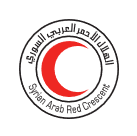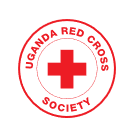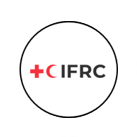The Red Cross and Red Crescent (RCRC) National Societies, in most countries, act as the first and primary responders in emergency situations. The year 2020 was exceptional in regards to the response given by National Societies (NS) towards addressing the needs of communities most vulnerable to COVID-19. The RCRC NS had to quickly adapt to the situation and regulations while ensuring that staff and volunteers are also equipped and protected. In situations like this, it is critical to understand how the virus is affecting National Societies at a national and subnational level, which led to the growing need of a data driven tool that can showcase this information.
INFORM COVID-19 Risk Index
510, the data and digital initiative of the Netherlands Red Cross, has been working closely with several National Societies by providing data and digital tools for the COVID-19 response. An optimal tool to be used by National Societies would be one that can clearly identify risk areas geographically and implications COVID-19 might cause. 510 proposed using the Index for Risk Management (INFORM) COVID-19 Risk Index as it can provide the specific analysis and assessment needed. In brief, the index translates information about crisis risk of a certain geographical region, including information about the SARS-CoV-2 virus, into a single indicator that can be used for the response. The index can help National Societies identify at-risk areas and determine the major driving factors of risk, which supports them deciding how to best manage and plan for resource allocation.
Adaptability of the tool
Among the many advantages of the index, its adaptability to fit different contexts is high on the list, which is why many National Societies have been interested in the tool and have been integrating it into their COVID-19 response strategies. The Syrian Arab Red Crescent (SARC), was one of many that integrated the tool into their response strategies. When talking with the SARC’s Information Management Generalist, Fadi Ibrahim, he stated “our programs depended on the index to match the need with its particular region”. He later elaborated on how the INFORM COVID-19 Risk Index played a role in their response by saying “the index helped with our emergency preparedness and actions at all SARC branch levels”. Another useful element of the index is that it can be linked to a dashboard that is adapted to fit the requirements of the NS and will assist in visualizing all the indicator specific data. Ibrahim elaborated on the use of the dashboard by saying “the dashboard’s set–up helped us with our situational reporting that is done for all SARC branches in Syria. The report highlights two main things, first the collaboration between the SARC Monitoring Evaluation Accountability and Learning (MEAL), Information Management (IM) and Organizational Development (OD) units, and second inputs from the COVID-19 response by sector, that includes, for example, data on COVID-19 cases, updates, certain road blockades, referrals helped and so on”.
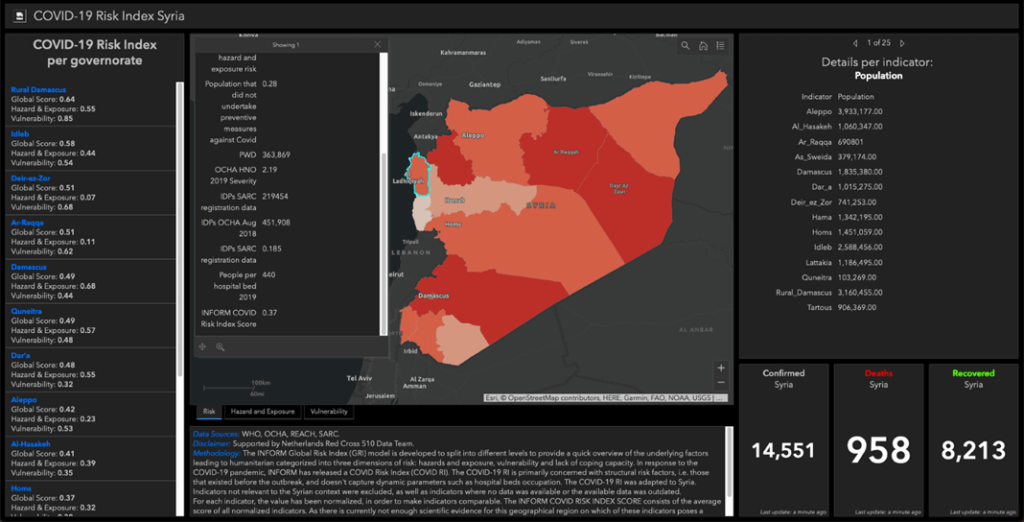
Syria Arab Red Crescent COVID-19 Risk Index Dashboard
Integrating various approaches
Similarly, the Iraq Red Crescent Society (IRCS) was also keen on working together with 510 on developing a risk index framework. IRCS were not only keen on learning how to build the framework, but also wanted to learn how the index works as a whole in order to take the lead in the future and contribute in this way to their Digital Transformation. When discussing with Sadeq Nazar, the Head of the Organizational Development and Reporting Department at IRCS, he said “we had a plan to develop a tool that will help management in analyzing, reporting and ultimately taking decisions. We saw that this would be a good opportunity to move forward with the risk index since we did not have such a tool in place”. Nazar then elaborated on how he proceeded working with the index by saying “we started working with 510 on our existing data, but reached a point where we needed to look at integrating new data”. He elaborates by stating “finding new data was a limitation we faced; with the rise of COVID-19 cases and our main priority being the response, we had to look for other approaches that would work for our situation”. Nazar then stated “we shifted our strategy and began exploring and learning about Geographical Information Systems and how such a tool could be useful in identifying certain risks”. The IRCS has been actively improving their Geographic Information System skills and have been working on expanding their systems to include more digitized methods of data collection.
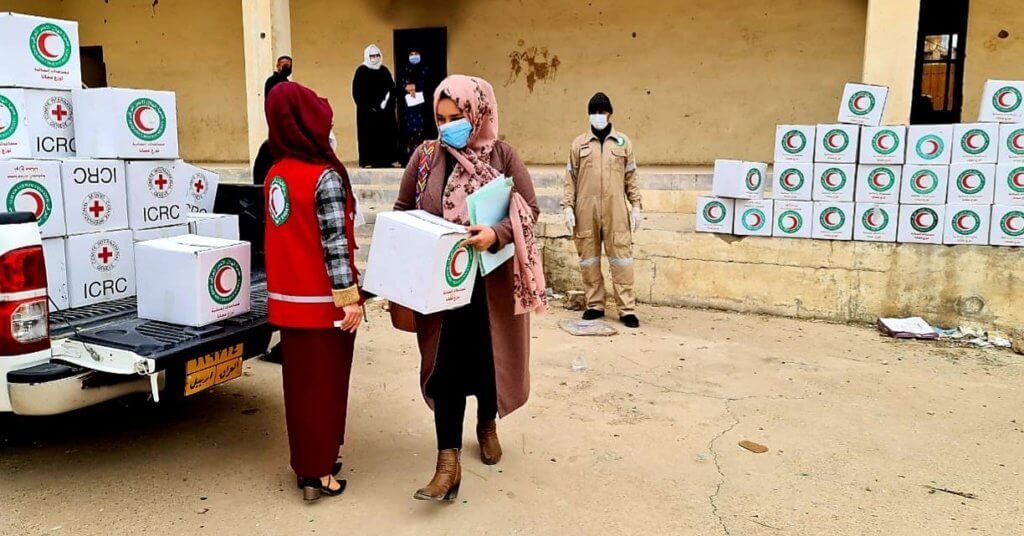
Iraq Red Crescent Society distributing food parcels to families affected by COVID-19
Supporting local interventions
National Societies are able to decide, due to the tool’s adaptability, which indicators in the index best fit their context and need, thus adjusting the index accordingly. At the Uganda Red Cross Society (URCS), Joel Kitutu, the Geographic Information Officer, stated “we needed the risk index to source complimentary information for two things. First, to support targeted risk communication and other interventions, such as food distribution in Kampala Capital City and its surrounding area during lockdown, and second to support the rolling out of the COVID-19 community engagement strategy”. Kitutu later elaborates on how the index has helped URCS with their COVID-19 service delivery by stating “we were able to have more targeted interventions thus prioritizing intervention areas and vulnerable population groups such as children and nursing mothers”. At the time, Uganda Red Cross Society were using the ArcGIS software and with the support of 510 a visualization dashboard was developed through ArcGIS that hosts the risk index data. Kitutu said “one of the highlights of using this tool was the ability to visualize vulnerability and risk in a simplistic but scientific way”.
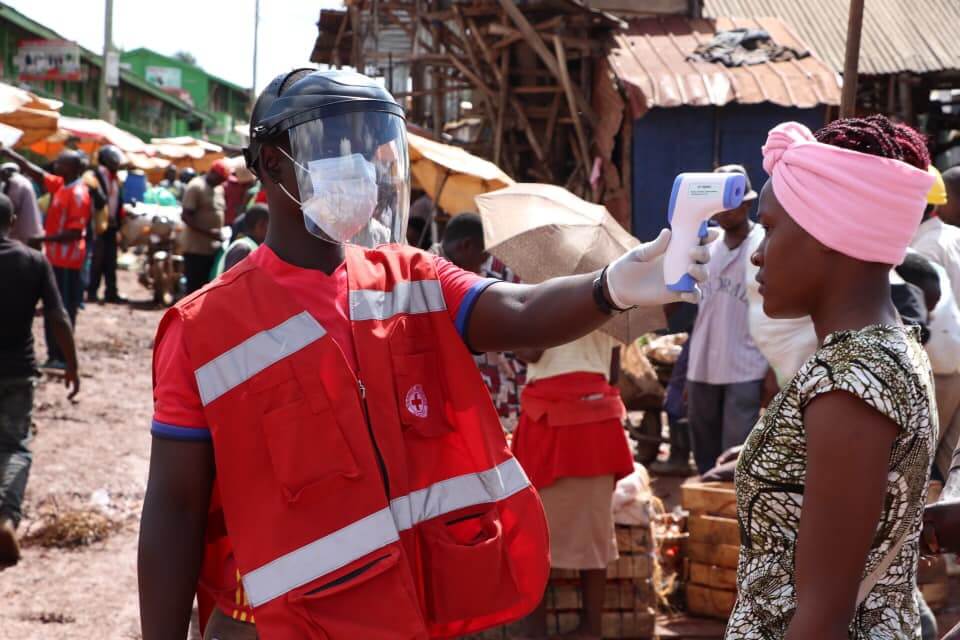
Uganda Red Cross Society carrying out screening against COVID-19 and establishing hand washing stations in public places
In the last year, various National Societies have integrated data and digital tools into their operations, that can effectively assist in their emergency preparedness and response. It is crucial, however, that the availability of data and digital tools can easily be integrated and used by different National Societies, making them adaptable and expandable to visualization tools and others.
Image source: IFRC ShaRED Web Platform

